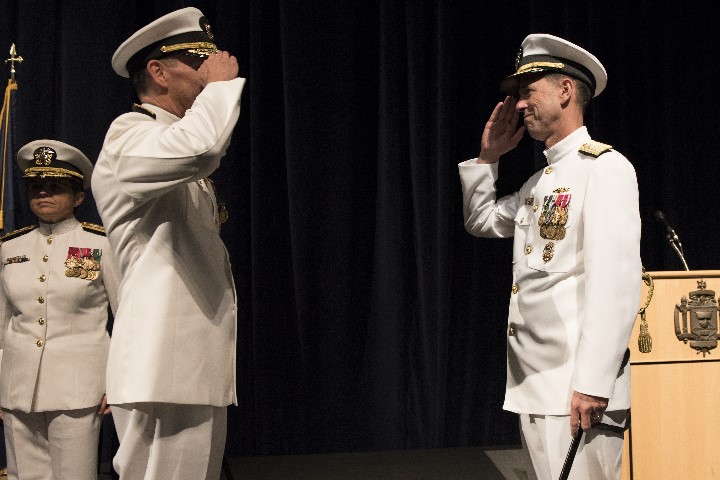The U.S. Navy’s success at defending America and maintaining maritime superiority in a quickly evolving world centers on developing competent leaders with strong character—the central focus of a new Navy Leader Development Framework.


The U.S. Navy’s success at defending America and maintaining maritime superiority in a quickly evolving world centers on developing competent leaders with strong character—the central focus of a new Navy Leader Development Framework.
The framework, which all sailers are expected to review and embrace, outlines “how the U.S. Navy will develop leaders that demonstrate both operational excellence and strong character at every level of seniority,” according to USNI News.
Chief of Naval Operations Adm. John Richardson recently released the document to explain how the goal—leaders with strong character—requires “two lanes on the path” to excellence. “Lane 1 develops operational and warfighting competence. We must become more skilled at our jobs as we grow. An incompetent leader is a recipe for disaster,” according to the framework. “Lane 2 develops character. We must strengthen our ability to always behave consistently with our core values of honor, courage and commitment.”
And the Navy’s process of character formation isn’t restricted to the classroom.
“In our Navy, leaders can take full advantage of a rich combination of formal schools, structured on-the-job training and experience, and self-guided education,” the framework reads. “Every day top leaders take the opportunity to put into practice what they learn.”
“Character applies in an operational setting—it’s not just for the classroom. The best leaders mention it at briefs, during execution, and during debriefs,” according to the document.
The character development framework also involves mentors who demonstrate both technical knowledge and operational skills through drills and routines, but also the strong character necessary to develop leadership.
“Mentors do all of the above, and more, in a way that is more personal, involved, and long term,” according to the framework. “Mentors probe deeply into their protege’s strengths and weaknesses, challenging them to be a more complete ‘whole person.’”
Richardson’s directives resonate with school-based research recently published by the Institute for Advanced Studies in Culture.
James Davison Hunter and Ryan S. Olson write in The Content of Their Character:
[C]haracter is constituted by the enactments of the moral ideals espoused within a tradition and enacted within the institutions of particular communities . . . These virtues are, more often than not, valorized in a society’s social institutions and celebrated in those exemplars who practice them well.
The Navy, an institution with a strong command structure, has the opportunity to actively push its leaders to build character. And while schools and other institutions are tempted to focus merely on competence, the Navy’s new framework contends that “Competence and character are so tightly intertwined that they must be strengthened together.”
School leaders with the same perspective can look to the U.S. Army Junior Reserve Officers’ Training Corps (JROTC) to provide similar programs that develop leaders with strong character in their school.